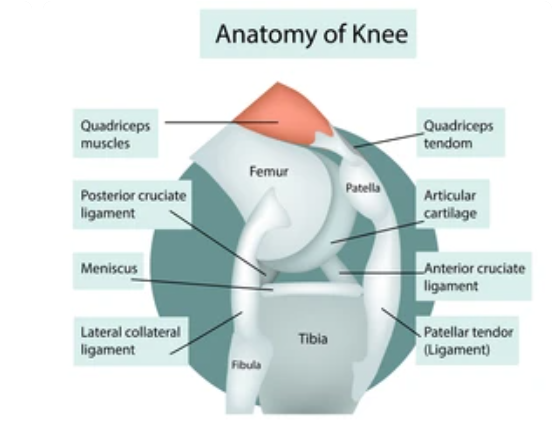The Basic Science of Arthritis: Unraveling the Mysteries
The Basic Science of Arthritis: Unraveling the Mysteries
Arthritis, a group of complex and debilitating joint disorders, has intrigued scientists for centuries. This comprehensive article delves into the basic science of arthritis, exploring the fundamental mechanisms underlying its development, the role of genetics, inflammation, and immune responses. By unraveling the intricate biology of arthritis, we aim to provide a deeper understanding of this condition and shed light on promising avenues for research and treatment.
Introduction
Arthritis, an umbrella term for over 100 different types of joint disorders, has long perplexed medical researchers and clinicians alike. While the word "arthritis" may conjure images of joint pain and inflammation, the underlying science is both intricate and fascinating. This comprehensive article embarks on a journey into the basic science of arthritis, seeking to unravel the mysteries that have intrigued scientists for centuries. We explore the key mechanisms, genetic factors, immune responses, and inflammatory processes that underpin the development of arthritis. By gaining a deeper understanding of the fundamental biology of arthritis, we aim to shed light on promising avenues for research and treatment.
Section 1: Understanding Arthritis at the Cellular Level
- The Anatomy of a Joint
To understand arthritis, one must first comprehend the structure of a joint, including its components and the role they play in joint function.
- Cartilage: A Vital Tissue
Cartilage is a critical component of joints, serving as a cushion and facilitating smooth movement. We delve into the structure and function of cartilage.
- Synovium and Synovial Fluid
The synovium is a thin membrane that lines joint capsules and produces synovial fluid. We explore its role in joint health and the lubrication of joints.
Section 2: Types of Arthritis and Their Unique Mechanisms
- Osteoarthritis: Wear and Tear
Osteoarthritis, the most common type of arthritis, is often associated with aging and joint wear and tear. We examine the mechanisms behind this degenerative disease.
- Rheumatoid Arthritis: An Autoimmune Challenge
Rheumatoid arthritis is an autoimmune disorder where the immune system attacks joint tissues. We explore the immune mechanisms and genetic factors that contribute to its development.
- Gout: The Crystal Culprit
Gout is characterized by the accumulation of uric acid crystals in joints. We investigate the mechanisms behind gout attacks and their connection to metabolic factors.
- Ankylosing Spondylitis: The Spine's Struggle
Ankylosing spondylitis primarily affects the spine and is marked by inflammation and fusion of vertebrae. We examine the genetic and immune factors involved.
Section 3: Genetics and Arthritis
- The Role of Genetics
Genetics plays a significant role in the susceptibility to arthritis. We explore the genetic markers and risk factors associated with various types of arthritis.
- Hereditary vs. Sporadic Arthritis
Some forms of arthritis have a hereditary component, while others develop sporadically. We distinguish between the two and their genetic underpinnings.
- Twin Studies and Familial Clustering
Twin studies and familial clustering provide insights into the hereditary nature of arthritis. We examine their findings and implications.
Section 4: Inflammation and the Immune Response
- The Inflammatory Process
Inflammation is a hallmark of arthritis, contributing to pain and joint damage. We delve into the inflammatory pathways and molecules involved.
- Immune Cells and Arthritis
Immune cells, including T cells and B cells, are central to the development of autoimmune arthritis. We explore their roles and interactions.
- Cytokines and Chemokines
Cytokines and chemokines are signaling molecules that regulate immune responses and inflammation in arthritis. We examine their functions and therapeutic implications.
Section 5: Arthritis as a Systemic Disease
- Beyond Joints: Extra-Articular Manifestations
Arthritis can affect more than just joints, leading to systemic complications. We discuss extra-articular manifestations and their impact on overall health.
- Comorbidities and Cardiovascular Risk
Individuals with arthritis are at a higher risk of cardiovascular diseases and other comorbidities. We explore the connections between arthritis and systemic health.
- Psychological and Quality of Life Impact
Arthritis can take a toll on mental health and quality of life. We examine the psychological impact and coping strategies.
Section 6: Emerging Research and Therapies
- Advances in Genetics and Genomics
Genetic research is uncovering new insights into the genetic basis of arthritis. We discuss the potential for precision medicine in treatment.
- Immunotherapy and Targeted Therapies
Immunotherapy and targeted therapies are revolutionizing the treatment of autoimmune arthritis. We explore their mechanisms and potential.
- Regenerative Medicine
Regenerative medicine holds promise for repairing damaged joint tissues. We discuss stem cell therapy and tissue engineering as potential treatments.
Section 7: The Future of Arthritis Research
- Big Data and Artificial Intelligence
Big data and artificial intelligence are transforming arthritis research. We explore their applications in disease prediction and treatment optimization.
- Patient-Centered Research
Patient-centered research is shaping the future of arthritis investigations, with patients actively involved in research design and decision-making.
- Global Collaborations
Global collaborations are essential for advancing arthritis research and improving treatment outcomes.
Conclusion
Arthritis, a complex and multifaceted group of joint disorders, has been the subject of scientific inquiry for centuries. By delving into the basic science of arthritis, we gain a deeper understanding of its mechanisms, genetic underpinnings, and the inflammatory and immune processes that drive its development. This knowledge not only helps us appreciate the complexity of arthritis but also provides a foundation for future research and therapeutic breakthroughs.
As science continues to advance, the mysteries of arthritis are gradually being unraveled. With a concerted effort from researchers, clinicians, and individuals affected by arthritis, there is hope for improved treatments, greater precision in care, and ultimately, a brighter future for those living with arthritis.
















